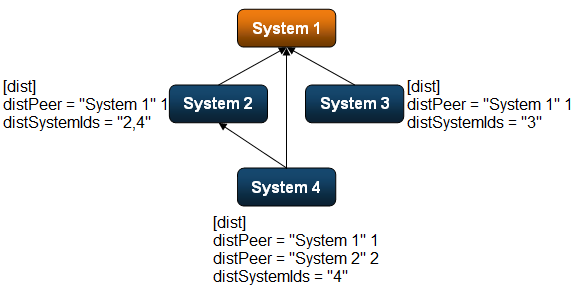One Way Dist
In case of some configurations it may not be necessary to request the DP identification of all partner systems. For example the setup could be configured that only the server (master system) accesses data points on the clients (sub station). Therefore, the load on low bandwidth networks is reduced.
By using One Way Dist, the dist manager is enabled to request the DP identification only from certain systems but still connect to all systems. Therefore the systems or their managers still have information if the partner system is connected or not, however, due to the lack of the DP identification the system is not shown in the system overview panel and its data points are not accessible.
One Way Dist cannot be used for projects < 3.13 because the DP identification is always necessary for older projects. Therefore, the distSystemIds config entry is ignored.
It is possible to enable One Way Dist while creating a new project (see also creating a distributed system).
It is recommended that the structure of the complete system is planned before creating the projects. Otherwise, One Way Dist can also be defined afterwards by setting the distSystemIds config entry manually. This config entry defines from which systems the dist manager can request the DP identification.
The DP identification is cached. Therefore, in case of later changes (e.g. distSystemIds = "1,2,4" is changed to distSystemIds = "1,4") the whole project must be restarted. Otherwise the removed system (system 2) will be shown, because the received DP identification is still there.
The shown partner systems are stored on the internal data point _DistManager.State.SystemNums. All connected systems, whether or not they are shown, are stored on _Connections.Dist.ManNums.
The dist systems for which One Way Dist is defined are indicated by the  symbol in the system overview panel.
symbol in the system overview panel.
EXAMPLE
In the following example system, only the server (master station) shall access the clients (sub station).
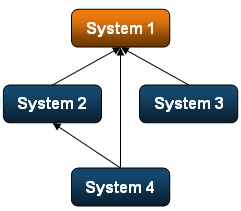
System 1 is defined as server. All other systems are connected to the server as clients. Therefore, system 1 is created first and needs no additional settings.
Figure: Creating project dist_1 on System 1
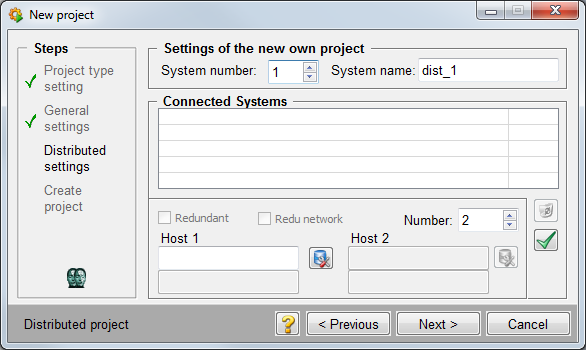
System 2 is connected to System 1 as client. Moreover, it also acts as server for System 4. Therefore, the connection to System 1 is configured as One Way Dist, the connection to System 4 is normal.
Figure: Creating project dist_2 on System 2
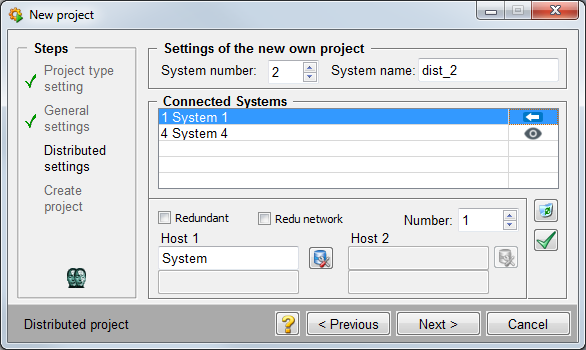
System 3 is connected to System 1 as client, therefore the connection is defined as One Way Dist.
Figure Creating project dist_3 on System 3
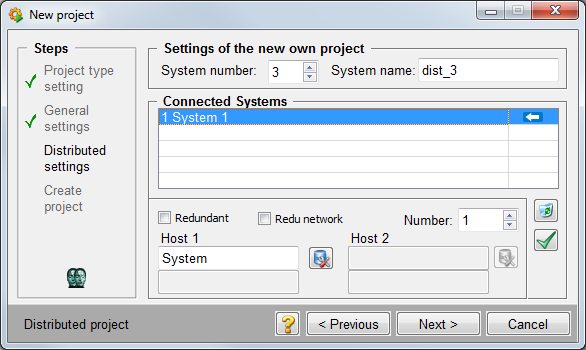
System 4 is connected to both System 1 and System 4 as a client. Therefore, both connections are configured as One Way Dist.
Figure: Creating project dist_4 on System 4
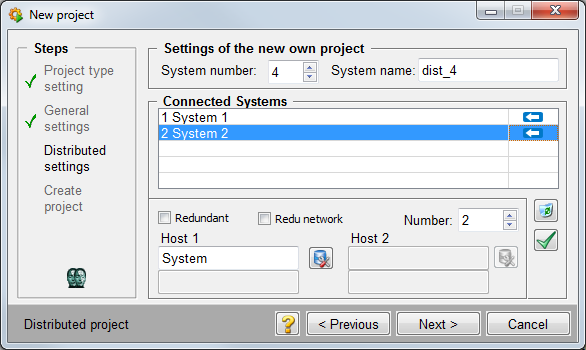
The config files of the created projects will be like this:
